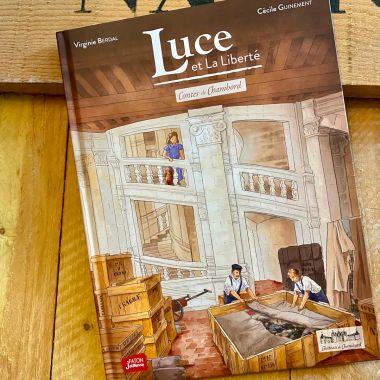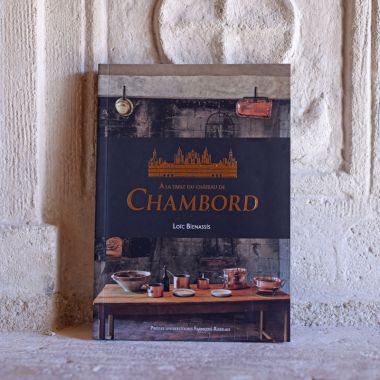
Only in french.
- A richly illustrated children's book
- A story inspired by real events, a fun way to learn
- Les Contes de Chambord collection
- Ages 7 and up

Only in french.
- A richly illustrated children's book
- A story inspired by real events, a fun way to learn
- Les Contes de Chambord collection
- Ages 7 and up

- Pocket Escape Game
- A historical investigation in Chambord
- French only

- Discover Chambord and the châteaux of the Loire Valley with Sylvie Tellier
- A fun, informative and easy-to-read book
- For ages 6 and up

- Discover Chambord with Minimiki
- From age 6
- First reading
- French only

Only in french.
- A richly illustrated children's book
- A story inspired by the ospreys of the Chambord forest
- A story that's fun to learn and discover
- Les Contes de Chambord collection
- Ages 5 and up

- The story of the castle's construction told to children
- Original, colorful illustrations on every page
- Portraits of historical figures and a vocabulary page
- Audio version of the book included
- A book for children aged 6 to 10
- Only in french

- A special issue of Science et vie magazine
- The castle, the forest and its animals, you'll know all about Chambord
- Games, coloring pages and anecdotes to discover and learn while having fun
- Photos and illustrations on every page
- Only in french

- Published for the exhibition :
- 43 pages
- Learn more about the story behind these two representations of La Vierge à l’Enfant avec le jeune saint Jean-Baptiste
- Only in french

- Discover Chambord's culinary traditions through the ages
- 125 pages
- Historical guide
- In French only
The Chambord bookshop is very popular with history and castle enthusiasts.

Pour poursuivre votre visite, vous devez être majeur.
Avez-vous plus de 18 ans?
L'ABUS D'ALCOOL EST DANGEREUX POUR LA SANTÉ.

Si vous souhaitez commander ce produit, vous devez d’abord faire votre commande avec le vin et faire une deuxième commande avec nos autres produits. Merci de votre compréhension.
Voulez-vous vider votre panier pour ajouter ce produit?